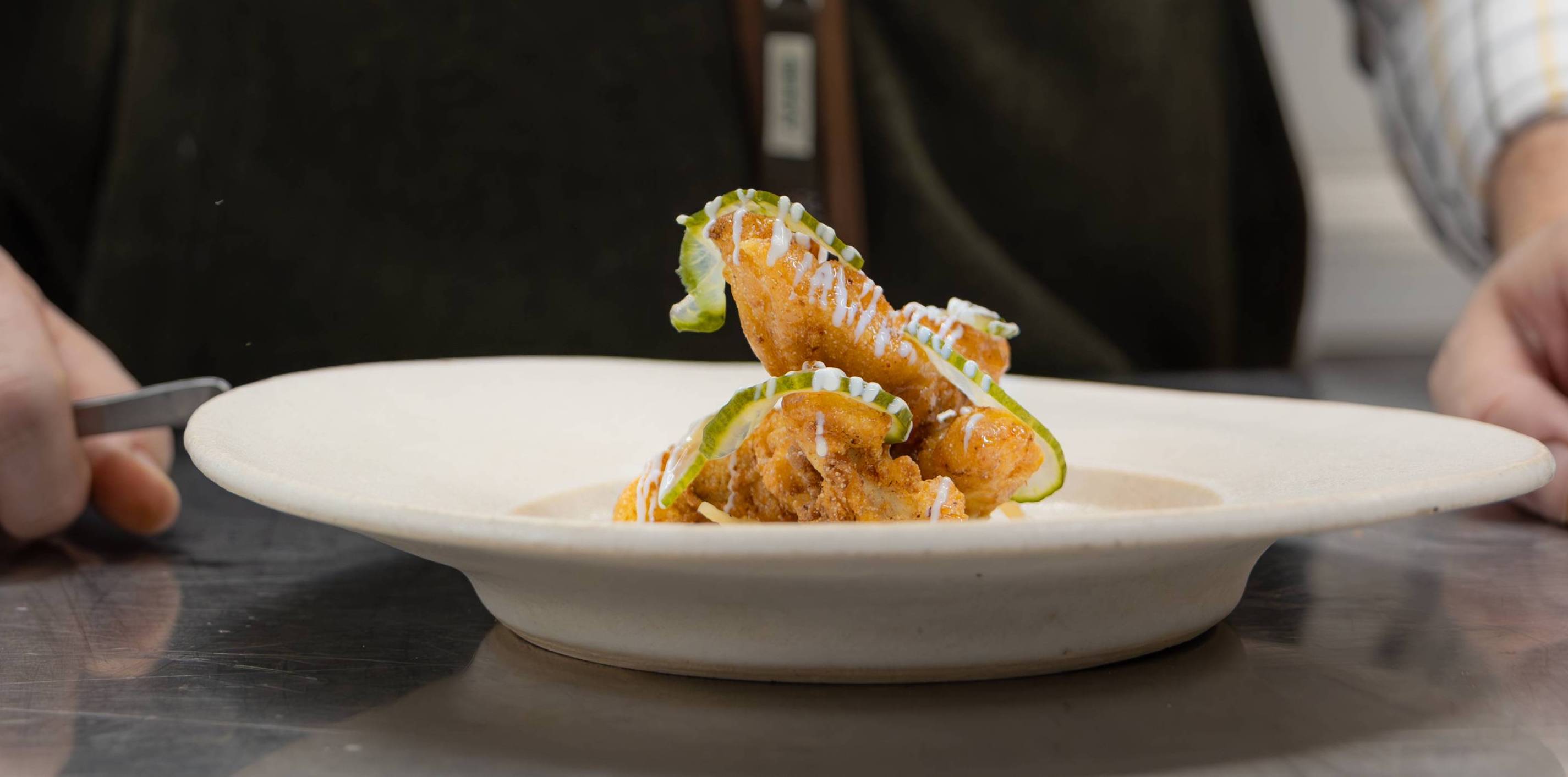
Expert tips for growing your own vegetables at home
Growing and harvesting fruit and vegetables for your own table is about as wholesome as it gets. It's something many of us really like the idea of but perhaps require a bit of a steer on in order to start out on the right foot. Here, professional kitchen gardener Ellie Marrian shares her advice to help you and your vegetable patch thrive and flourish.
Ellie Marrian is the kitchen gardener at Doddington Hall in Lincolnshire, an RHS Partner Garden that prides itself on growing a wide array of vegetables for the estate’s farm shop, cafés, and restaurant. You can actually visit the Doddington kitchen garden – and, if you're looking for some inspiration to grow your own veg, we highly recommend you do. Short of that, however, you'd do a lot worse than reading on. Indeed, if you’re eager to glean some expert advice from a professional who grows 96 varieties of fruit and veg in a greenhouse, a polytunnel and an acre of beds outside, scroll down, because in this piece Ellie offers 10 valuable tips for those interested in growing their own vegetables at home.
1. Choosing the right location for your vegetable plot
Ideally, when choosing the location for a vegetable patch, you should aim for an area that gets sun for much of the day. In a traditional kitchen garden, the south-facing borders are where the sun-loving plants that enjoy warmer temperatures are grown, while the east- and north-facing areas are where the more shade-tolerant crops that can cope better with cooler weather are placed. So, get your compass out – it will help a great deal when deciding what to plant where.It’s also worth bearing in mind the positioning of trees or bushes that not only cast shade but take a lot of water out of the ground, which will increase your watering requirements. If there’s no getting away from such features in your garden, maybe building a raised bed is an option? It’s all about adapting to the circumstances.
2. Selecting the right gardening tools
Almost as important as choosing the best spot for your vegetable patch and thinking about the most favourable positions for your different plants, is selecting the right tools for the job. By that I mean tools that fit you as a person and make jobs far easier for you. You don’t have to spend a fortune, and if you invest in a few quality tools at the outset, and you look after them, they’ll last for years.
3. Improving the soil in your vegetable plot
If you’re starting from scratch and establishing a vegetable plot by converting an area of grass or lawn, the first step I would take is to dig it over to loosen the earth and put improve aeration. At Doddington Hall, we practice the no-dig method – but when starting out, some form of cultivation is necessary to reverse the effects of compaction.Once you’ve forked it over, apply generous amounts of organic matter. This might be well-rotted manure, leaf mould, or compost from old pots, and will help add nutrients into the soil and improve the soil structure. Avoid fresh manure, as the uric acid in it can scorch off the roots.If you want to be really geeky, you can even test your soil to establish its type and pH. Is it a sandy soil, a clay soil, or a chalky soil? Is it acidic, alkaline, or neutral? Different crops like different soil types, but in general you should aim for a fairly neutral pH that isn’t too heavy. You can pick up DIY test kits from a garden centre without spending a lot of money. Once you have this information, you can then take the necessary steps to improve the soil quality. Put simply, if you have good soil, you’re well set to have healthy and high-yielding plants.
4. Selecting the right vegetables to grow at home
When looking through your seed catalogues or browsing the shelves at your local garden centre, it’s important that you choose vegetables that are suited to your soil and your site and – if you’re feeling inspired to start growing your own veg halfway through the summer – the time of year, too. One of the best pieces of advice I can give here, is to grow what you want to eat and what you are really interested in! Otherwise, no matter how well they do, you’ll always be disappointed.
Salad might be a little boring, but for first-time growers it gives quick results. Beans and peas are the same. Beetroot is another great choice and comes in lots of different colours, while the likes of squashes, courgettes, cucumbers and melons also grow quickly and get quite big, so they’re very rewarding to grow. Carrots are a little different again and kids love helping to pull them out of the ground.
From tomatoes to chillies and everything in between, there are so many different colours and quirky varieties available now that you won’t find in the supermarket, so don’t be afraid to experiment.
5. Planning a vegetable plot
Having a plan for what you want to get out of your vegetable patch each year is always a good idea. It gives you something to work towards, and it helps you keep on track with sowing different crops; there are time windows in which you must sow certain species, and if you miss them it’s often a case of waiting until next year.
In an ideal world you will have your seeds by the beginning of March to then do your seed sowings through March and April, before planting out those young plants in May. There are options, though, for those who would like to start growing vegetables slightly later in the year.
As for growing on seedlings, a greenhouse is ideal. That said, some space on a sunny windowsill works well.
6. When and how to water your vegetable garden
The best time to water your vegetable patch is early in the morning or later in the afternoon. If you water plants in the middle of the day when the sun is at its brightest and temperatures are at their highest, you risk scorching the leaves, which can lead to crop loss.
Watering first thing in the morning is a good habit to get into, especially earlier in the year when watering in the evening puts you at greater risk of ‘dampening off’, whereby a combination of high moisture levels and low air temperatures can encourage the growth of fungus spores.
Always try to water from the bottom rather than the top of the plant, too. I use the mist setting on the hose and position this close to the soil which reduces evaporation, directs water to where it is needed, and allows me to gauge when to stop and move on.
If you’re able to put a water butt on a down pipe off the house or shed to harvest rainwater, all the better. Rainwater is generally better for your plants than mains water, and it will help you to keep your water bill down!
7. The benefits of mulch
A layer of mulch creates an extra barrier between the soil and the air to slow down evaporation of, and improve retention of, water (so you don’t have to use so much). Adding mulch will reduce the need for weeding as well, as it blocks the sunlight from reaching the weed seeds in the soil below.
Good options for mulch include compost, well-rotted manure, straw, woodchip, or decomposing leaves from your garden. By using materials like these that breakdown naturally, you are also slowly feeding your plants and topping up that all-important organic matter.
8. What to feed vegetables
In the Doddington Hall kitchen garden, we don’t use any man-made chemical fertilisers, but we do use an awful lot of seaweed feed that keeps the nutrient levels high in our soils. We also use ‘fish, blood and bone’ and ‘hoof and horn’ mixes. These organic fertilisers are high in nitrogen (for green leafy growth), potassium (great for flowering and fruits), and phosphorous (for healthy root systems), and they’re used from seedling stage to when the plants start to reach the end of their life.
Comfrey tea is another option. A smelly, brown, nutrient-filled water made by soaking comfrey leaves in a bucket of water, it is like rocket fuel when fed to your plants and really gets them going.
9. Monitoring for pests and diseases
Absolutely key to keeping pests and diseases in check is vigilance and swift action to nip any problems in the bud as soon as possible.
By keeping your vegetable patch tidy and removing debris that might be harbouring pests, you can reduce the likelihood of your crops being targeted from the off. If you do see that your plants are being eaten by something, have a good hunt around and try to find the culprit, checking under the lips of pots and the like. The same goes for weeding – little and often is the best approach.
Slugs are enemy number one for many people who are growing vegetables at home. Luckily there are many measures we can take to deter them. You can use nematodes that are watered into the soil, eggshells, copper bands, horticultural grit, or organic slug pellets.
Don’t forget your biological controls, either – the wildlife in your garden that can help you keep your veg pest-free. By providing habitat nearby for ladybirds, pollinating species and birds, you encourage natural allies that will soon find their way to whatever’s eating your plants.
10. Harvest regularly
Be proactive with your picking; the more you pick, the more you will encourage to grow. Plus, after investing all that time and effort, you want to catch your vegetables at their very best and your favoured size.
Most of all, enjoy it. Growing your own vegetables does take time and effort, but when you get it right, it really is so very rewarding!
You can learn all about Ellie’s role and the kitchen garden she looks after, here.















